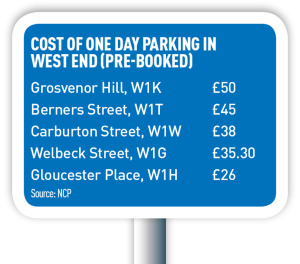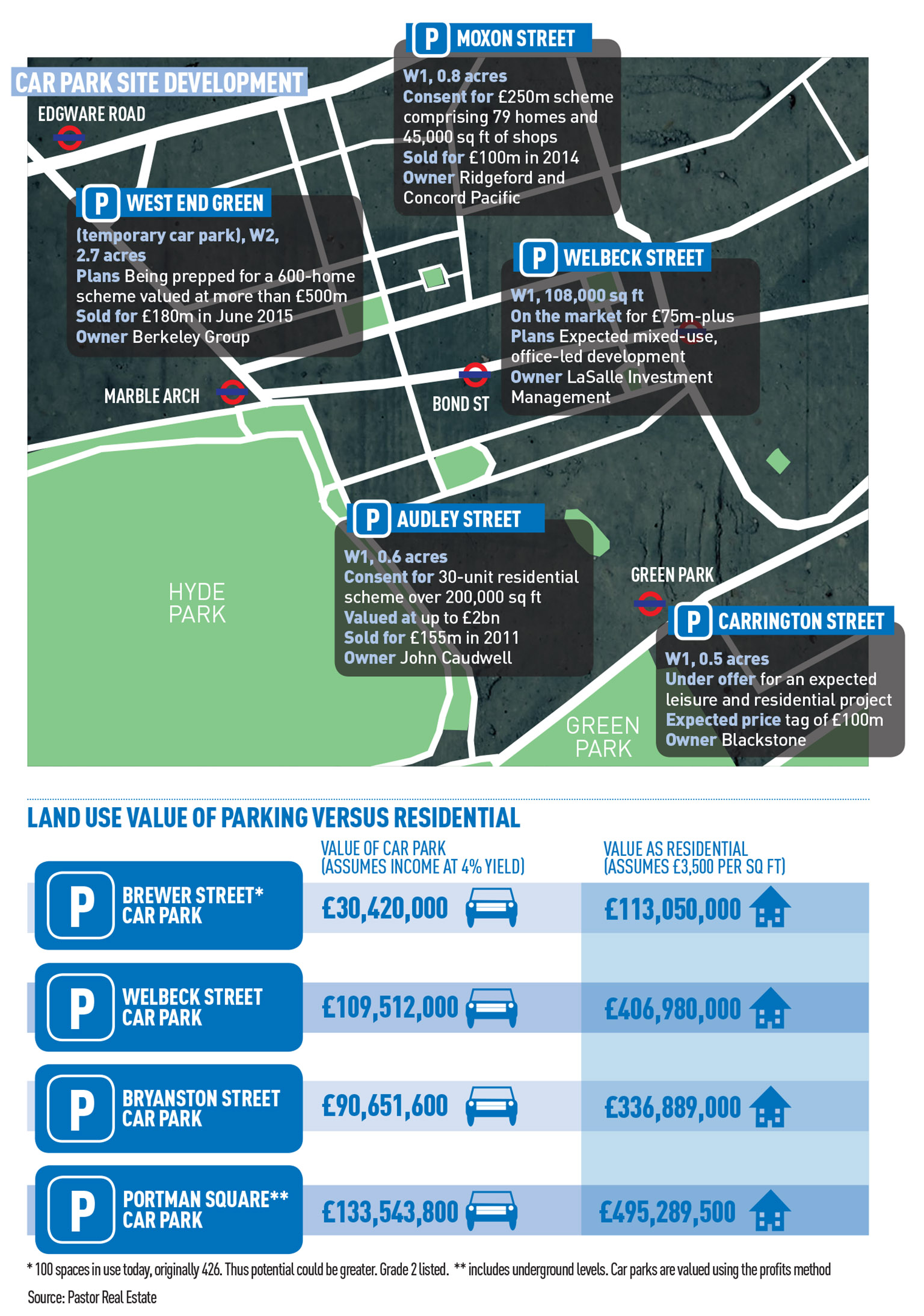 The makers of the ever-popular board game Monopoly may want to change the board. In parts of London, particularly the West End, soaring residential and commercial values mean that land currently used for car parking could be worth much more if it is redeveloped. There is certainly no such thing as free parking.
The makers of the ever-popular board game Monopoly may want to change the board. In parts of London, particularly the West End, soaring residential and commercial values mean that land currently used for car parking could be worth much more if it is redeveloped. There is certainly no such thing as free parking.
“Increasingly we are seeing a number of developers turn to car parks in the search of viable residential land in prime central London,” says David Lee, head of sales at Pastor Real Estate. “While fully operational car parks can offer a good return, the high demand for new homes in London makes these sites increasingly more attractive as a luxury residential development.”
The residential specialist agency published a report last autumn revealing that a car park site could be worth around three-and-a-half times more if redeveloped into high-end housing.
Smarting from the loss of office space that resulted from the government’s introduction of permitted development rights, Westminster City Council, like other London boroughs, has clamped down on change of use to housing. However, all of the five major car park redevelopments in Westminster are either residential-led or are likely to include a substantial amount of living accommodation.
“That is because car parks are normally classified by planners in the sui generis use class, so there are fewer restrictions on how the land can be redeveloped,” explains CBRE senior director Alastair Perks. “The West End is still very short on opportunities to do ground-up developments – so there will be a very real appetite for these.”
However, with office availability in the West End sinking to a 14-year low, there are now suggestions that redevelopment of office space on former car park sites could make commercial sense. Tim Whitmey, director at Savills, who was involved in the sale of Carrington Street car park to Blackstone, points out that residential development comes with an affordable housing penalty. He outlines the maths: “It may be possible to achieve £2,500 per sq ft for resi, which compares favourably with, say, £1,800 per sq ft for offices. But once affordable housing is taken into account, it may be cheaper to build offices.”
Other uses may also stack up. Whitmey recalls that many combinations were considered for the Carrington Street site, including gallery space, a boutique hotel and private members club. Whatever the ultimate use class chosen, potential investors are more likely to be concerned about the existing lease structure to car park operators. “In many cases these car parks are let on long leases,” says Cushman & Wakefield senior surveyor Sammie Oakden, who advised on the Moxon Street deal. “So, unless flexible development breaks are within the leases, the assets will be less hotly demanded.” This factor alone is likely to limit the amount of planning applications to change car park use in the West End.
So while a flurry of further car park conversions in Westminster is unlikely, those that do are likely to be welcomed. Stephen Peers, head of Deloitte Real Estate’s West End team, says: “These are currently dead sites that deliver nothing to the urban realm – they could offer a whole lot more.
For modern Monopoly players a blue-striped car park or two could be a winner.
Future of car parking in Westminster
It is difficult to pin a figure on the total number of car parking spaces in London (Transport for London came up with an estimate of 6.8m in 2000) and similarly there is no definitive figure for the amount of parking spaces in Westminster. A quick trawl of parking websites reveals many spaces for hire in private basement locations across the borough.
“The majority of large car parks in the West End are pretty empty,” says Savills director Tim Whitmey. C&W’s Oakden confirms: “Demand for car parking within the West End has been falling steadily since the introduction of the congestion charge in 2003.”
Market sources suggest declining patronage is a key reason that major car park operators have been looking to renegotiate payments to landlords or to exit their leases altogether.
The council is likely to be ambivalent to the trend. Oakden explains: “Westminster has a history of being amenable to the loss of car parking provision, as long as it can be demonstrated that the demand displaced from the loss of the facility can be accommodated nearby.”
But swinging the parking pendulum too far could jeopardise Westminster’s economic growth, warns Deloitte Real Estate partner Stephen Peers. He says: “People still drive into London – they need the ability to park. With wealth comes cars. Getting rid of too much car parking would be to Westminster’s detriment.”
Planning across London
A total of 56 planning applications for change of use of car parking space were submitted in the inner London boroughs over the past five years, according to the EGi Database.
Applications peaked in 2014 at 15 applications. Southwark has attracted the most applications during that period (12) while both Kensington and Westminster the fewest (five each).
A total of five applications were given consent last year.












